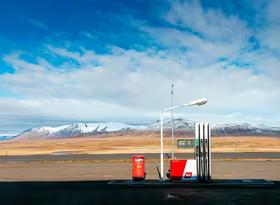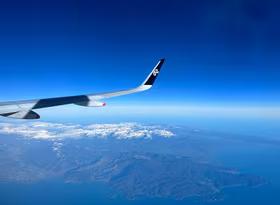Freight outlook post COVID-19
The movement of freight around the country has changed dramatically since the Level 4 lockdown, both in terms of the content and quantity of cargo. The most notable change, of course, is that the roads are eerily quiet because most human movements have ceased. As for remaining traffic flows, what road freight services are required to allow essential services to keep functioning, and what do we expect to happen to road freight once lockdown restrictions are uplifted? In this article we try shed some light on these questions during these very uncertain times for road freight.
Traffic flow data from NZTA shows that heavy traffic flows dropped 59% in one week from March 25 (Level 4 lockdown started that evening) to April 1 (see Chart 1). Road freight activity during the Level 4 lockdown appears have held stable at this level. The level of heavy vehicle traffic under Level 4 lockdown dips well below the new year lull at the start of the year.
Once Level 4 lockdown is uplifted, we will see more heavy vehicles working to provide materials for construction companies and logs to be hauled to processing plants and ports. Both industries that can resume activity at Level 3 if they abide by safety guidelines. What is more worrying is the prospect of sustained weak demand for road freight after the lockdown is over as the economy falls into a deep recession. Understanding what has happened to freight volumes during previous recessions can help us understand what might be ahead of us.
New Zealand’s freight volumes are driven by global economic activity, which drives demand for our exports, and domestic economic activity which drives import volumes. Road User Charges (RUCs) are a useful measure of the demand for freight movement. Over the previous 15 years, there have been three periods of decline in very-heavy vehicle RUCs and two periods of decline for medium vehicle RUCs (see Chart 2). The first decline in both medium and very-heavy RUCs was in the wake of the GFC as New Zealand entered a recession. From late 2014 to early 2016, very-heavy vehicle RUCs slumped. This decline was led by weaker export and import volumes, particularly for bulk items like forestry. More recently, since mid-to-late 2018, medium and very-heavy RUCs have softened along with generally softer economic activity.
Looking forwards, movement of bulk commodity items is heavily dependent on our goods export outlook. On the upside we will see some resilience in the agricultural sector as our trading partners continue to demand our food exports. We expected forestry exports to take a tumble in 2020 even before the hammer blow from COVID-19, as log prices had fallen because of an oversupply to China, our biggest log export market. Exports, and domestic use of New Zealand forestry products, are now expected to decline further as the world enters a recession and demand from our domestic construction sector is reduced significantly.
The biggest economic upheaval of this pandemic is undoubtedly in the tourism sector. In 2016 there was estimated to have been something in the region of 112,000 to 354,000 foreign tourists in New Zealand. The number of international tourists has now effectively fallen to zero. Freight companies supplying tourist outfits will see a large reduction in business activity while New Zealand remains shut off to the world. Domestic tourism should pick up after lockdown restrictions are lifted, but not nearly enough to counter the losses from abroad. As a result, the hospitality and retail sectors will also need fewer supplies.
There is some good news. Firstly, transport costs will be lower in the near-term as diesel prices fall due to lower crude oil prices. However, the depreciating New Zealand dollar will offset the falling oil price to some extent. Spending on roading and rail is likely to increase after the lockdown, with the government indicating that infrastructure spending will play an important role in reigniting the economy. Delivery services for online purchases also have an opportunity as people avoid close contact beyond Level 4 lockdown. Nonetheless, it will be some years before things return to relative normality for freight in New Zealand.










